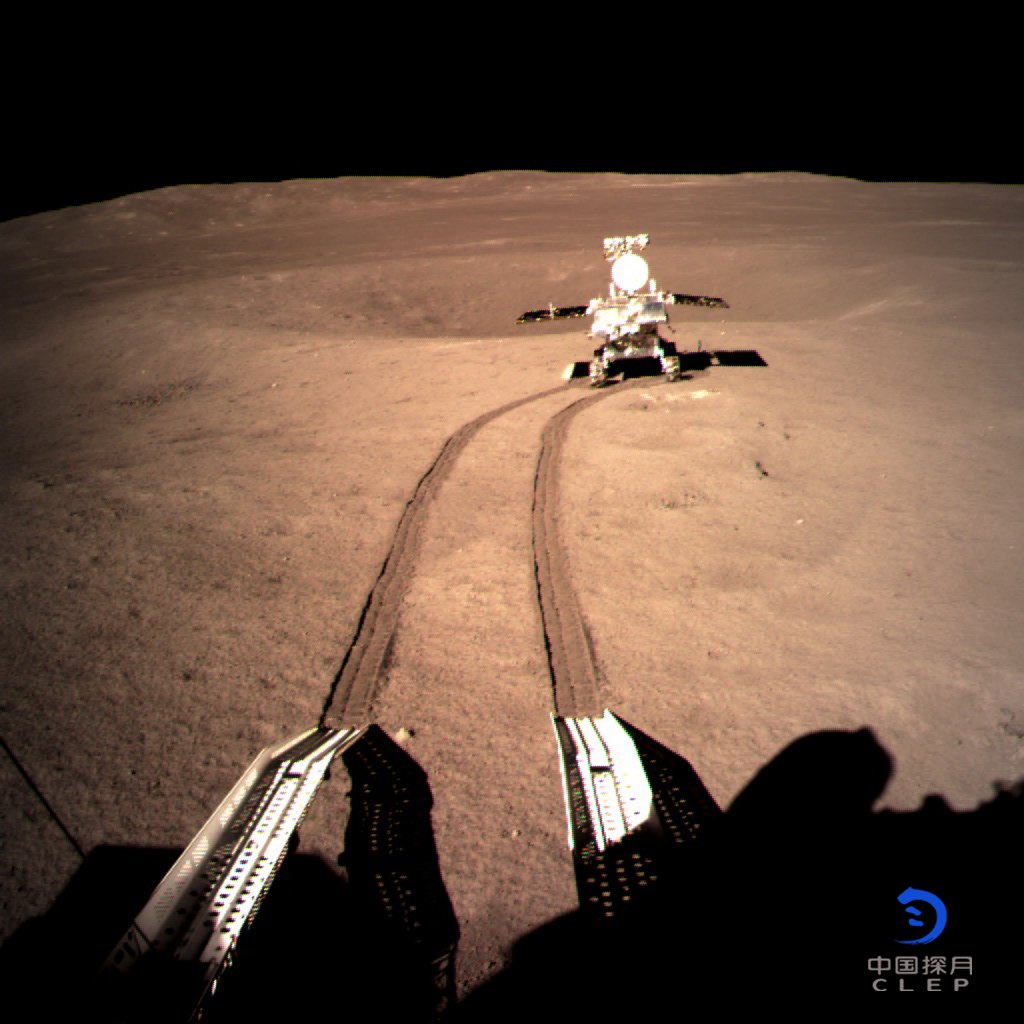China’s Yutu-2 rover sets off for UNEXPLORED areas as Chang’e 4 mission reawakens on far side of Moon

Far, far away from coronavirus worries, China’s Yutu-2 lunar rover and Chang’e-4 spacecraft have whirred back to life on the far side of the Moon, with the intrepid rover boldly setting off for unexplored areas.
After powering down while the Moon was hidden from the Sun, the mission has now earnestly started its 16th lunar day of work on Earth’s natural satellite.
The lander, rover and their science payloads are all in good operating condition, despite having by now endured the harsh conditions on the lunar surface for over a year.

As the Sun rose over its position in Von Kármán Crater, Yutu 2 blinked back to life this week and will now set out to investigate distant parts. The lander followed suit around 18 hours later and will continue its low-frequency radio astronomy observations, the China Lunar Exploration Program (CLEP) said.
Despite only being expected to last three lunar days, the pioneering rover is now into its 16th lunar day exploring the Moon. Lunar days are roughly equivalent to one month on Earth.
The mission has devised a new plan for Yutu 2, otherwise known as the Jade Rabbit-2, sending it to unexplored areas. Li Chunlai of the National Astronomical Observatories of China (NAOC), told China’s CCTV+ news outlet that the mission could gain significant insight by the rover trundling into new ground.

“If it can enter a basalt zone, maybe we can better understand [the] distribution and structure of ejecta from meteorite impacts,” Li said. “The distance may be 1.8 kilometers [1.1 miles]. I think it may take another one year for the rover to walk out of the ejecta-covered area.”
Yutu 2 has traveled an average of 88 feet (26.7 meters) per lunar day for the 15 days so far.
The Chang’e-4 mission made the first-ever soft landing on the Moon’s south pole on January 3, 2019. China is planning a lunar sample return mission, Chang’e 5, for later this year.
Also on rt.com China releases new photo of mystery ‘Moon glass’ and it’s… something (PHOTOS)Like this story? Share it with a friend!













